
Roots
The quiet hours of slumber, often perceived as a period of stillness and restoration for the body, hold a different truth for our hair. While we drift, our strands, particularly those with a textured nature, navigate a landscape of potential challenges. The simple act of resting against a surface can initiate a subtle yet persistent attrition, diminishing the vitality we strive to maintain.
Understanding this nocturnal dynamic begins with a foundational look at hair itself—its very architecture and inherent qualities that render it susceptible to nightly wear. It is within this elemental comprehension that the wisdom of traditional sleep protection finds its grounding, revealing why these practices are not merely anecdotal customs, but responses to a deep, biological reality.

The Microscopic World of a Hair Strand
Each strand of hair, seemingly simple to the unaided eye, is a complex biological marvel. At its core, the Cortex, a bundle of keratin proteins, provides the hair’s strength and elasticity. Surrounding this central column lies the Cuticle, an outermost protective layer composed of overlapping, scale-like cells.
These scales, much like shingles on a roof, lie flat when the hair is healthy, creating a smooth surface that reflects light and reduces friction. This arrangement is crucial for both aesthetic appeal and the hair’s structural integrity.
However, the cuticle’s delicate nature means it is easily disturbed. Mechanical forces, such as those encountered during daily styling or, indeed, during sleep, can cause these scales to lift. Once lifted, the underlying cortex becomes exposed, making the hair vulnerable to moisture loss and structural degradation. The medulla, the innermost core, plays a less understood role in human hair, sometimes present, sometimes absent, its presence more common in coarser, thicker hair types.

Why Textured Hair Craves Special Care at Night
Textured hair, with its unique helical structure, presents a greater surface area for interaction with external elements and often possesses more cuticle layers than straight hair. This inherent architecture, while beautiful, also contributes to its predisposition for dryness and susceptibility to mechanical stress. The twists and turns along a curly or coily strand mean that the cuticle scales are not always uniformly flat, even in their healthiest state. This natural irregularity means textured hair can be more prone to tangling and snagging.
Textured hair’s unique structure, characterized by its helical shape and increased surface area, makes it particularly vulnerable to friction and moisture loss during sleep.
When textured hair comes into contact with absorbent or abrasive surfaces, like a standard cotton pillowcase, the consequences are amplified. The friction causes the already somewhat lifted cuticle scales to become further dislodged, leading to frizz, dullness, and ultimately, breakage. Furthermore, the natural oils produced by the scalp, which typically travel down the hair shaft to provide conditioning, find it harder to navigate the curves of textured hair.
This makes moisture retention a persistent challenge, and a thirsty cotton pillowcase only exacerbates this issue by wicking away what little moisture the hair possesses. The interplay of these factors underscores the wisdom of traditional practices that prioritize gentle protection during rest.
| Component Cuticle |
| Description Outermost protective layer of overlapping scales. |
| Nighttime Vulnerability Friction from surfaces can lift scales, leading to frizz and damage. |
| Component Cortex |
| Description Inner layer of keratin proteins, providing strength and elasticity. |
| Nighttime Vulnerability Exposed when cuticle is damaged, leading to moisture loss and weakness. |
| Component Medulla |
| Description Innermost core, often absent in finer hair. |
| Nighttime Vulnerability Less directly affected by external friction, but overall strand health impacts it. |

Ritual
As daylight fades and the world quiets, a profound shift occurs in the realm of hair care. The daily engagement with styling tools and products gives way to a quieter, yet equally significant, set of practices aimed at preserving the hair’s integrity through the night. These are the rituals of protection, passed down through generations, refined by experience, and now increasingly validated by scientific understanding. Stepping into this sphere of practical wisdom means acknowledging that the choice of nighttime hair care is not a mere preference, but a deliberate act of preservation, safeguarding the hair from the subtle, yet relentless, pressures of sleep.

The Silken Sanctuary Bonnets and Wraps
The use of bonnets and head wraps, particularly those crafted from smooth materials such as silk or satin, represents a cornerstone of nighttime hair protection. These coverings create a protective barrier between the hair and the often-abrasive surfaces of bedding. Unlike cotton, which possesses a more textured surface and absorbent properties, silk and satin allow hair to glide freely. This minimal friction is vital for preventing the mechanical stress that can lead to lifted cuticles, tangles, and breakage.
The material science behind this choice is compelling. Silk, a natural protein fiber, boasts an exceptionally smooth surface with a low coefficient of friction. Satin, while often a synthetic weave, mimics this smoothness, providing similar benefits.
Both materials help to maintain the hair’s natural moisture balance, as they are less absorbent than cotton. This means that the hair’s natural oils and any applied conditioning treatments remain on the hair, contributing to hydration and suppleness, rather than being wicked away by the pillowcase.

Pillowcases A Foundation of Gentleness
For those who prefer not to cover their hair directly, or as an additional layer of protection, the choice of pillowcase material is paramount. A pillowcase made from silk or satin offers a gentle resting place for the hair, significantly reducing the friction experienced throughout the night. The benefits mirror those of bonnets ❉ diminished tangling, less frizz, and a preservation of style. This simple swap can significantly alter the morning appearance and long-term health of hair, especially for delicate or highly textured strands.
Choosing smooth sleep surfaces like silk or satin pillowcases and bonnets significantly reduces friction, preserving hair’s cuticle integrity and moisture balance overnight.

Styling for Slumber A Gentle Art
Beyond material choices, the way hair is prepared for sleep plays a crucial role in its nightly protection. Specific styling techniques can minimize tangling and reduce the hair’s exposure to friction.
- Loose Braids and Twists ❉ Securing hair in loose braids or twists helps to contain the strands, preventing them from rubbing against each other or the bedding. This reduces mechanical stress and preserves curl patterns.
- Pineappling and High Buns ❉ For those with curly or coily hair, gathering hair into a loose, high ponytail or bun at the crown of the head, often called “pineappling,” keeps the bulk of the hair off the pillow. This minimizes compression and helps maintain volume and curl definition.
- Sectioning Hair ❉ Dividing hair into smaller sections before styling for sleep can also be beneficial, allowing for more controlled protection and easier detangling in the morning.

Selecting Your Nighttime Protector
The decision between a bonnet, a wrap, or a specialized pillowcase often comes down to personal comfort and hair needs. Some individuals find the secure fit of a bonnet provides superior protection, particularly for very long or voluminous hair. Others prefer the freedom of a silk pillowcase.
Many choose a combination, using a protective style along with a smooth pillowcase or bonnet. The key lies in understanding the principle ❉ minimize friction and preserve moisture.

Styling for Sleep A Gentle Art
The intention behind these nighttime styling practices extends beyond mere convenience. It is about creating an environment where the hair can rest, undisturbed by the tossing and turning that naturally occurs during sleep. This proactive approach ensures that the hair’s natural structure, moisture, and overall vitality are maintained, setting the stage for healthier, more manageable hair upon waking.
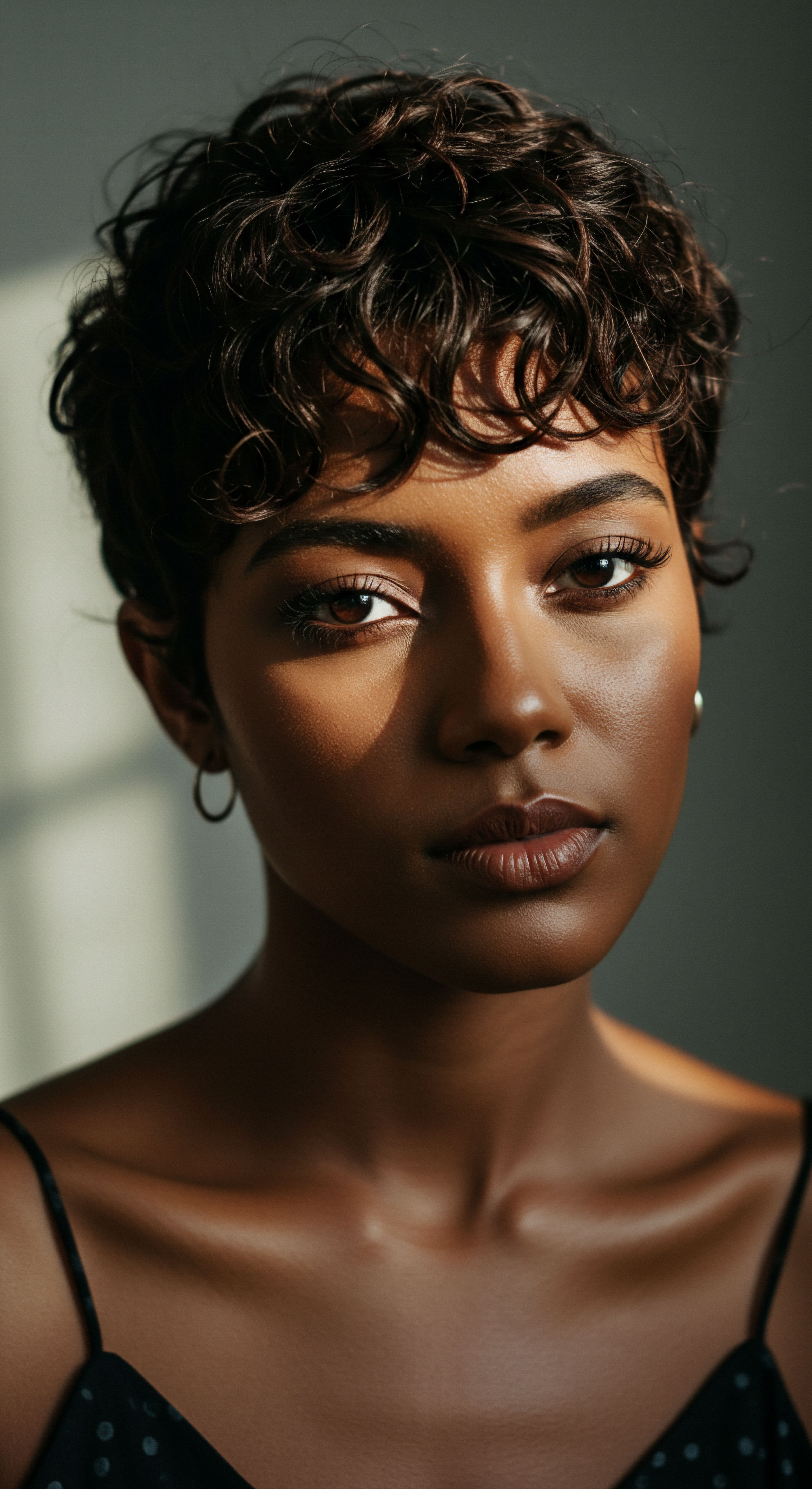
Relay
Moving beyond the tactile experience of soft fabrics and gentle styling, we arrive at the underlying scientific mechanisms that affirm the value of traditional sleep hair protection. The seemingly simple act of covering hair or resting it on a particular surface triggers a cascade of biophysical and chemical interactions that directly influence hair health. This deeper exploration reveals how ancestral wisdom, often rooted in keen observation, aligns remarkably with contemporary trichology and material science, offering a comprehensive understanding of why these nighttime rituals are not just beneficial, but fundamentally sound.

Friction’s Silent Scourge on Hair
One of the most significant scientific principles validating sleep hair protection is the reduction of mechanical friction. Hair, particularly textured hair, is highly susceptible to damage from abrasive forces. When hair rubs against rough surfaces, such as conventional cotton pillowcases, the outermost cuticle scales are repeatedly lifted, frayed, and eventually broken. This process, known as Cuticle Erosion, compromises the hair’s primary protective barrier.
Research on textile friction consistently highlights the superior properties of silk and satin. A study comparing different pillowcase materials, for instance, found that “switching to silk or satin materials can reduce friction by up to 43% during sleep.” This measurable reduction in mechanical stress directly translates to less cuticle damage, minimizing frizz, split ends, and overall breakage. The smooth surface of silk allows hair strands to glide rather than snag, preserving the integrity of the cuticle layer and consequently, the health of the hair fiber.

Maintaining Hydration Homeostasis
Another critical scientific principle at play is the preservation of hair’s moisture content. Hair, like skin, maintains a delicate balance of hydration. The cuticle, when intact, helps to seal in moisture, preventing excessive Transepidermal Water Loss (TEWL) from the hair shaft.
Cotton, being a hydrophilic (water-loving) fiber, readily absorbs moisture from its surroundings, including the hair. This wicking action can lead to significant dehydration of the hair strands overnight.
In contrast, silk is naturally hydrophobic, meaning it repels water and absorbs considerably less moisture than cotton. By sleeping on silk or satin, or by covering hair with a silk or satin bonnet, the hair’s natural oils and any applied conditioning treatments are retained on the hair shaft, rather than being absorbed by the bedding. This helps to maintain optimal hydration levels, contributing to hair’s elasticity, softness, and overall resilience. Hydrated hair is less prone to brittleness and subsequent breakage.
The smooth, non-absorbent qualities of silk and satin reduce hair friction and prevent moisture depletion, directly addressing key causes of nocturnal hair damage.
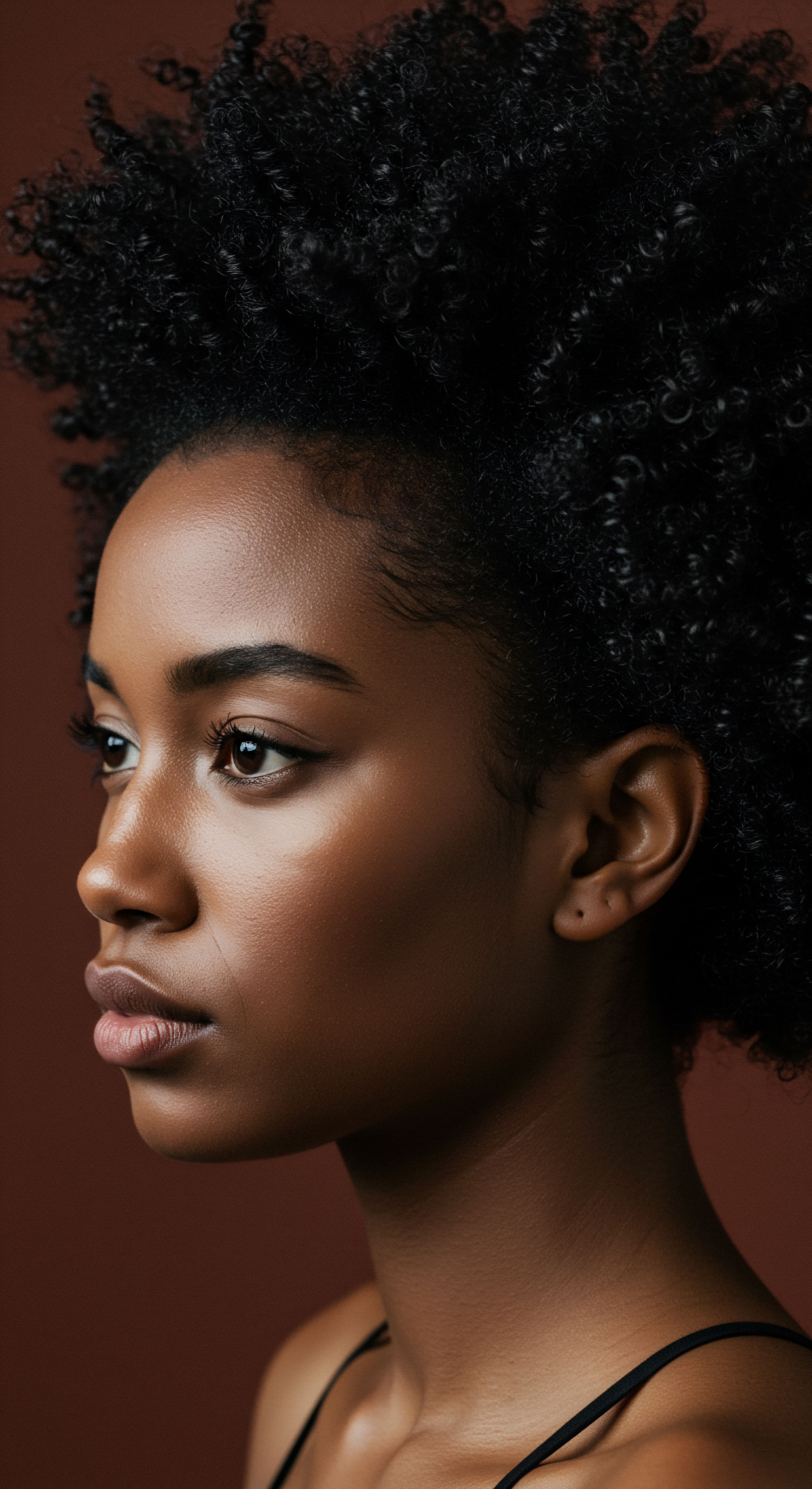
Mechanical Stress and Breakage Thresholds
The physical act of tossing and turning during sleep, which can occur up to 40 times per night for an average person, subjects hair to considerable mechanical stress. This repeated pulling, stretching, and compressing against a surface can push hair fibers beyond their elastic limits, leading to fracture. The tensile strength and elasticity of hair, while impressive, are not limitless. When the cuticle is compromised by friction, the underlying cortex becomes more vulnerable to these mechanical forces, increasing the likelihood of breakage.
For chemically treated hair, such as bleached, dyed, or relaxed strands, this vulnerability is even more pronounced. Chemical processes weaken the protein bonds within the hair shaft, making the cuticles more porous and susceptible to lifting. This means that chemically altered hair experiences faster cuticle erosion and is at a heightened risk of split ends and breakage when exposed to friction. Protective sleep coverings act as a buffer, mitigating these damaging forces and allowing the hair to rest without enduring constant micro-trauma.
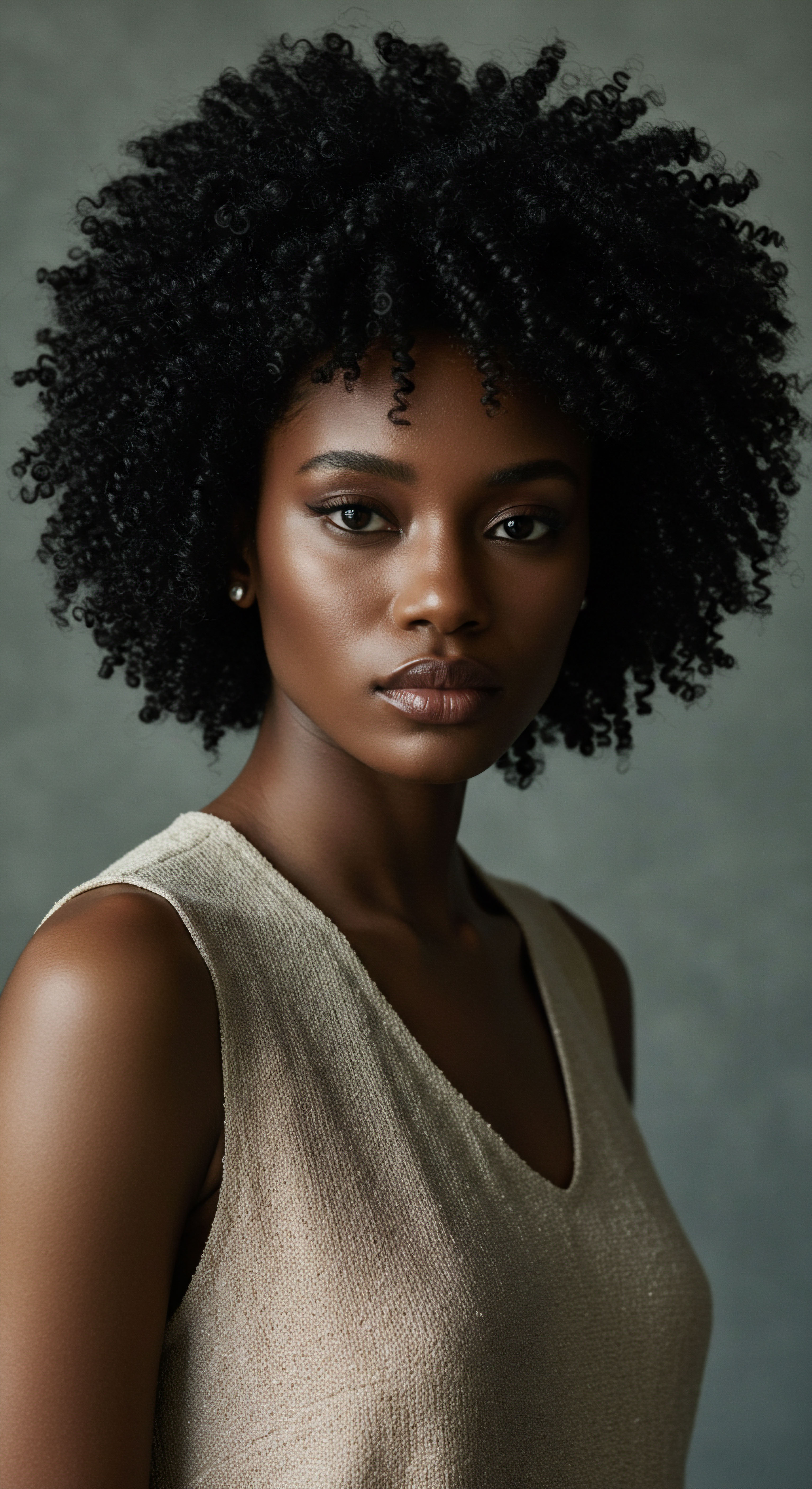
An Ancestral Echo in Contemporary Science
The practice of covering hair for sleep is not a modern invention; it is a custom with deep historical roots across various cultures, particularly within Black communities. From the ancient headwraps of African cultures, worn for protection from the elements and as symbols of status, to the tignon laws of 18th-century Louisiana that compelled Black women to cover their hair as a sign of subservience, these coverings have carried layers of meaning and utility. Yet, even under oppressive circumstances, these head coverings continued to serve a practical purpose ❉ safeguarding hair from environmental damage and maintaining its condition.
The wisdom embedded in these traditions, passed down through generations, intuitively recognized the physical and chemical vulnerabilities of hair. The materials chosen, often natural fibers like silk or finely woven cloths, provided the necessary protection against friction and moisture loss, even if the precise scientific terminology was not yet formulated. This continuity of practice, now supported by modern trichological research, underscores a powerful truth ❉ traditional methods of care often hold profound scientific validity.
| Material Cotton |
| Friction Coefficient (Relative) High |
| Moisture Absorbency High (Hydrophilic) |
| Impact on Hair Increased frizz, tangling, breakage, dryness due to friction and moisture absorption. |
| Material Silk |
| Friction Coefficient (Relative) Low |
| Moisture Absorbency Low (Hydrophobic) |
| Impact on Hair Reduced frizz, tangling, breakage; helps retain hair's natural moisture and oils. |
| Material Satin |
| Friction Coefficient (Relative) Low |
| Moisture Absorbency Low (Synthetic, mimics silk) |
| Impact on Hair Similar benefits to silk in reducing friction and retaining moisture. |

The Physics of Hair Protection
The physical principles that govern the interaction between hair and fabric during sleep are rooted in tribology, the science of friction, wear, and lubrication. When hair moves across a surface, friction generates heat and mechanical stress. The coefficient of friction, a measure of the resistance to motion between two surfaces, is significantly lower for silk compared to cotton.
This means less force is required for hair to glide over silk, minimizing the abrasive effect on the cuticle. A lower coefficient of friction directly correlates with less physical damage to the hair shaft.
Consider the impact of static electricity, often generated by friction between hair and certain fabrics, particularly synthetic ones. Static causes hair strands to repel each other, leading to frizz and tangling. Materials like silk, with their smoother surfaces and protein structure, tend to generate less static charge, contributing to a calmer, more cohesive hair structure upon waking.
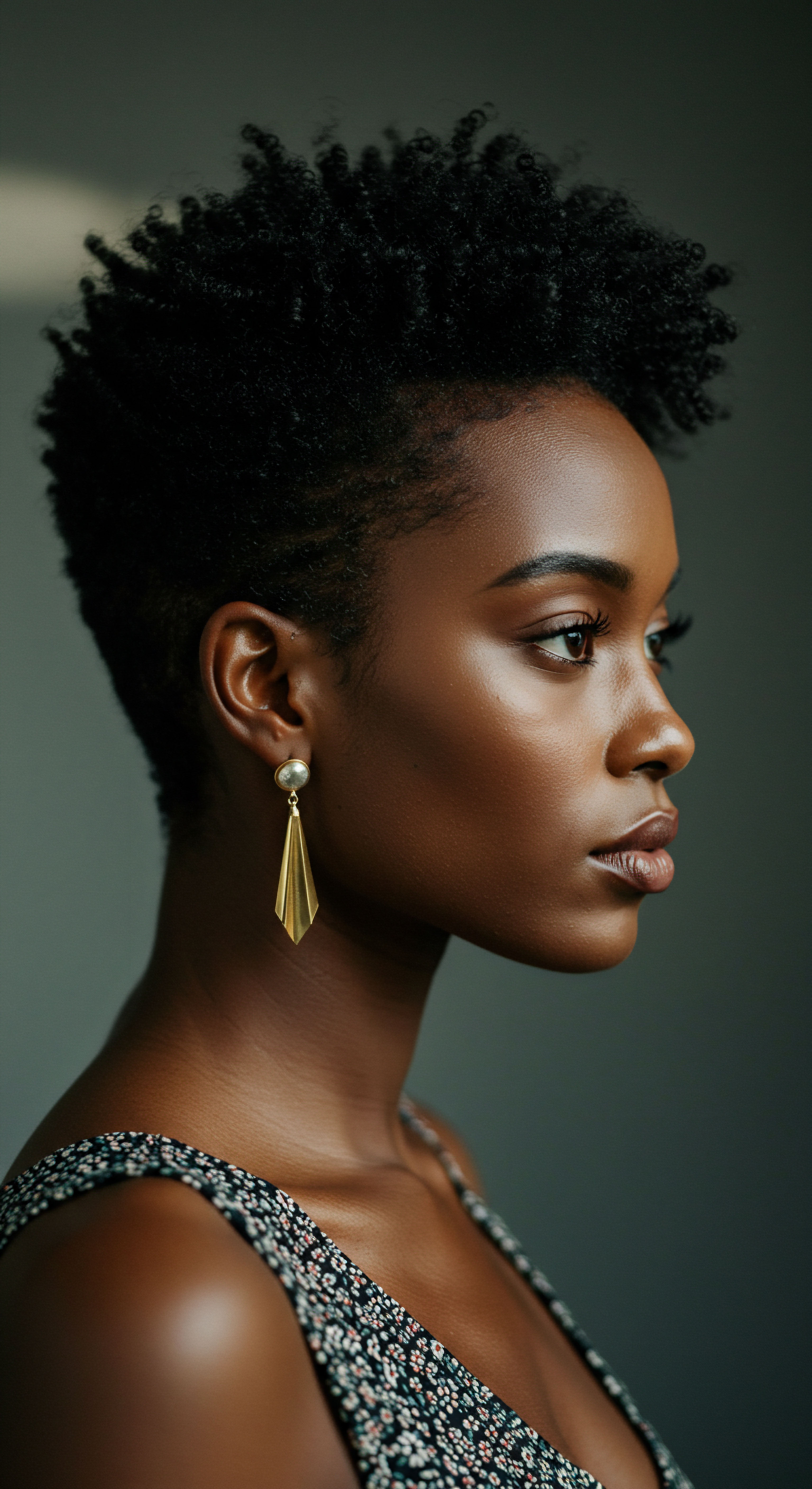
Beyond the Surface Preserving Internal Structure
While cuticle protection is paramount, the benefits of sleep hair protection extend to the hair’s internal structure. When the cuticle is compromised, the cortex becomes exposed, leading to a more rapid loss of moisture and increased susceptibility to environmental aggressors. This can weaken the hair from within, reducing its elasticity and making it more prone to breakage under tension. By safeguarding the cuticle, sleep protection indirectly preserves the integrity of the cortex, ensuring the hair retains its inherent strength and flexibility.
Moreover, the retention of natural oils and conditioners facilitated by non-absorbent materials means that the hair remains lubricated. This internal lubrication further reduces friction between individual hair strands, preventing them from tangling and causing damage to one another during sleep. This holistic approach to preservation, addressing both external friction and internal hydration, underscores the comprehensive scientific backing for these time-honored practices.
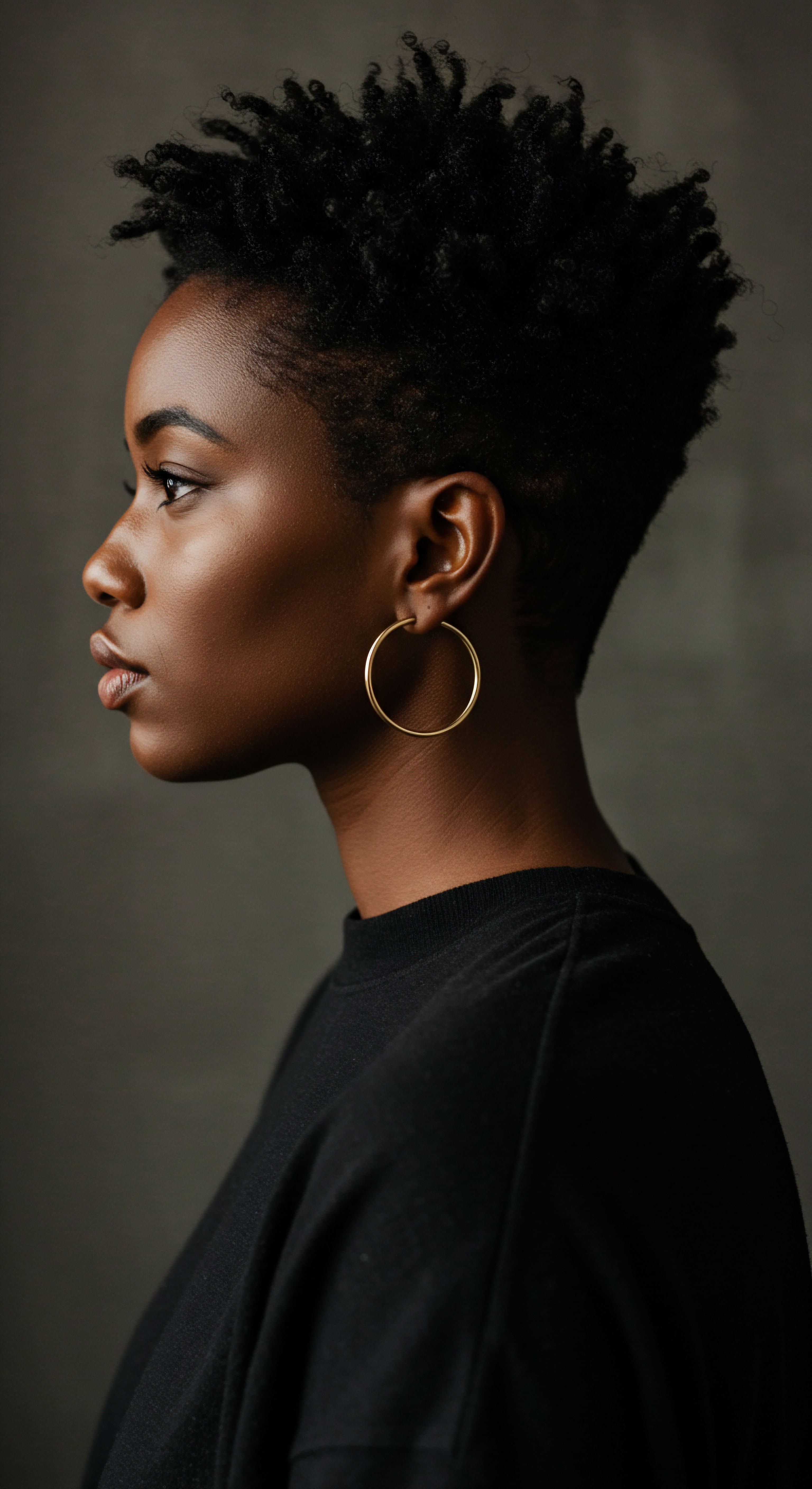
Reflection
The journey through the scientific principles that validate traditional sleep hair protection reveals a beautiful convergence of ancient wisdom and modern understanding. From the delicate architecture of a single strand to the intricate dance of friction and hydration, every facet points to the profound logic behind these practices. It is a testament to the enduring power of observation and the human capacity to adapt and preserve, recognizing the inherent vulnerability of our hair in the quiet hours of the night. These rituals, whether a simple bonnet or a silken pillow, offer more than just physical safeguarding; they represent a conscious choice to honor and protect, allowing our hair to truly rest and rejuvenate, ready to greet the new day with its natural strength and luster.
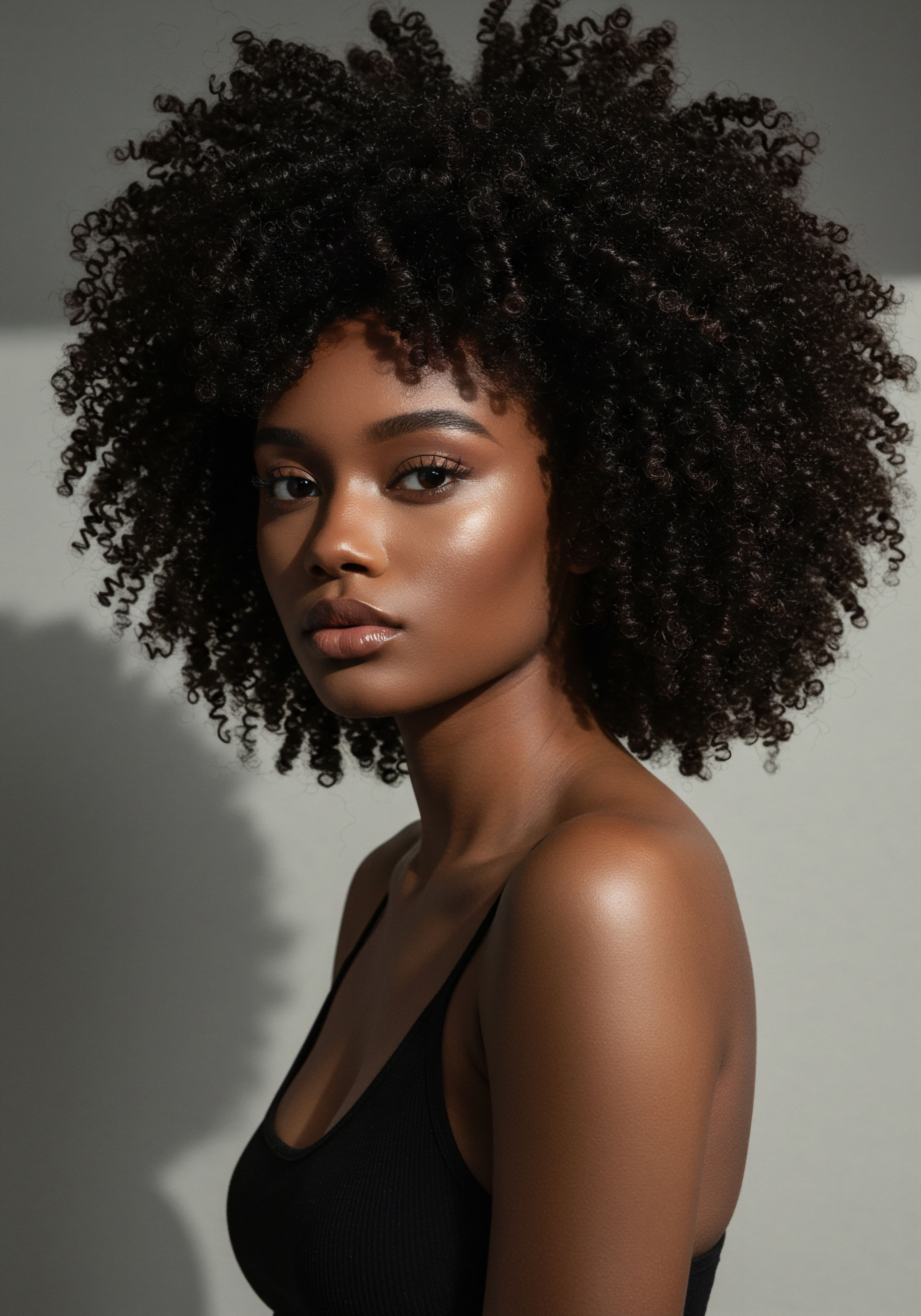
References
- Robbins, Clarence R. Chemical and Physical Behavior of Human Hair. Springer, 2012.
- Bhushan, Bharat. Principles and Applications of Tribology. John Wiley & Sons, 2013.
- McMichael, Amy J. and Valerie D. Callender. Hair and Scalp Diseases ❉ Medical, Surgical, and Aesthetic Treatments. CRC Press, 2021.
- Draelos, Zoe Diana. Hair Cosmetics ❉ An Overview. In Cosmetic Dermatology ❉ Products and Procedures. Wiley-Blackwell, 2010.
- Gavazzoni Dias, Maria Fernanda. Hair Cosmetics ❉ An Overview. International Journal of Trichology, 2015.
- Robbins, Clarence R. and George V. Scott. Prediction of Hair Assembly Characteristics from Single Fiber Properties. Journal of the Society of Cosmetic Chemists, 1978.
- Kamath, Y. K. and H. D. Weigmann. The Effects of Humidity on the Mechanical Properties of Human Hair. Journal of the Society of Cosmetic Chemists, 1982.
- Schwartz, A. M. and D. L. Knowles. A Study of Hair Damage. Journal of the Society of Cosmetic Chemists, 1963.
- El-Messiry, M. et al. Friction Coefficient and Electric Static Charge of Head Scarf Textiles. Journal of Engineered Fibers and Fabrics, 2017.
- Nair, A. U. B. A. Patwardhan, and R. P. Nachane. A Study on the Relationship Between Physical Properties and Frictional Characteristics of Chemically Treated Cotton Fabrics. Indian Journal of Fibre & Textile Research, 2013.
- Simpson, W. S. A Comparison of Methods of Measurement of Young’s Modulus for Keratin Fibers. Journal of the Textile Institute, 1965.